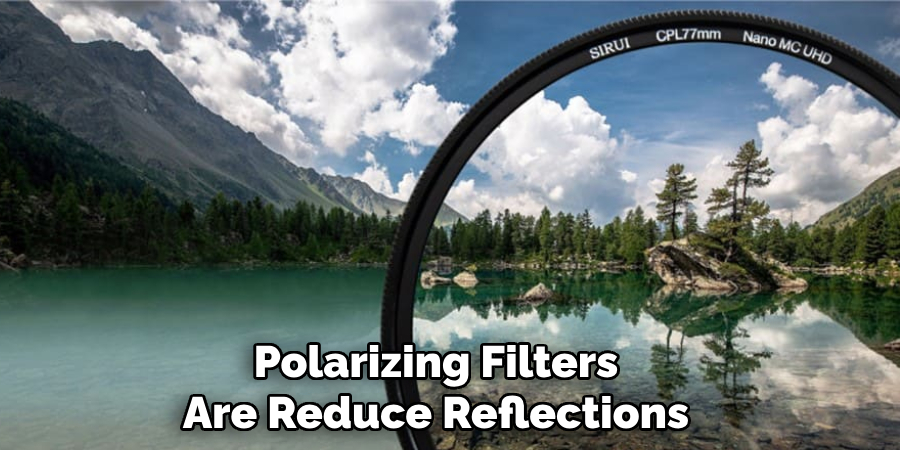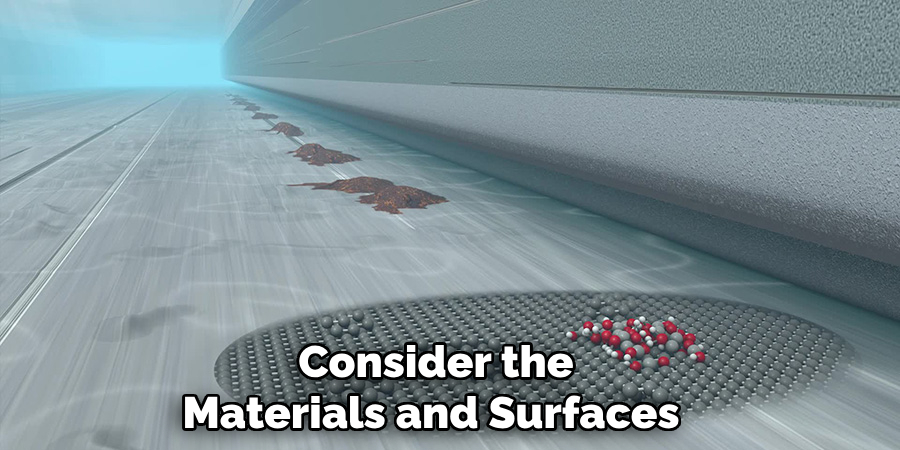Stopping IR (infrared) reflection is crucial in various applications, including photography, surveillance, and remote sensing, where unwanted reflections can significantly degrade image quality and sensor accuracy.

IR reflections occur when infrared light bounces off surfaces and interferes with the intended signal, leading to blurry or distorted images. This guide explores the key aspects of how to stop ir reflection.
This issue is particularly prevalent in environments with glass surfaces, water, or polished materials that reflect infrared light.
To mitigate IR reflection, a combination of techniques can be employed, such as using anti-reflective coatings, adjusting the angle of the camera or sensor, and incorporating IR cut filters. Additionally, controlling the lighting environment and using materials that absorb rather than reflect infrared light can enhance the clarity and accuracy of the captured data.
Understanding the sources and behaviors of infrared reflections enables the implementation of effective strategies to reduce their impact, ensuring high-quality results in both professional and consumer applications.
Understanding IR Reflection
Infrared (IR) reflection is a phenomenon where infrared light waves bounce off surfaces and interfere with the desired signal or image.
IR light, which lies just beyond the visible spectrum, behaves differently from visible light, often penetrating materials or reflecting off surfaces that would generally diffuse or absorb visible light.
Common sources of IR reflection include glass surfaces, glossy finishes, water bodies, and metallic objects.
These reflections can introduce significant noise and distort the quality of images or sensor readings, posing challenges in fields like photography, remote sensing, and security surveillance.
By understanding the intrinsic properties of infrared light and how it interacts with different materials, one can develop more effective methods to manage and utilize IR light, ensuring superior performance in various technological applications.
10 Methods How to Stop Ir Reflection
1. Use Anti-Reflective (AR) Coatings
One of the most effective ways to reduce IR reflection is by applying anti-reflective coatings to surfaces that are prone to reflect IR light. AR coatings are thin layers of materials designed to minimize the amount of light that reflects off the surface.

They work by causing destructive interference for specific wavelengths, reducing the intensity of reflected light. These coatings are commonly used on lenses, glasses, and screens.
For example, in photography, applying AR coatings on camera lenses can significantly reduce IR reflection, improving image clarity and contrast.
2. Incorporate IR Absorbing Filters
IR absorbing filters, also known as hot mirrors, are designed to block or absorb IR light while allowing visible light to pass through. These filters can be placed over lenses, sensors, or any other surfaces that need protection from IR reflection.
In surveillance cameras, using IR filters helps in preventing the IR light emitted by the camera’s own illuminators from reflecting back into the lens, which can cause glare and wash out the image. These filters are particularly useful in environments where IR light sources are prevalent.
3. Optimize Lighting Conditions
Controlling and optimizing lighting conditions is another effective method to reduce IR reflection. In environments where IR reflection is problematic, consider adjusting the position and intensity of light sources.
For example, in photography studios or industrial settings, positioning lights at angles that minimize direct reflection can help. Diffusing light sources with softboxes or reflectors can also reduce harsh reflections.
Additionally, using indirect lighting, where light is bounced off walls or ceilings, can further minimize the chances of IR light reflecting directly into lenses or sensors.
4. Use Matte and Non-Reflective Surfaces
Replacing glossy or reflective surfaces with matte or non-reflective materials can significantly reduce IR reflection. Glossy surfaces tend to reflect more IR light, causing glare and other issues.
In contrast, matte surfaces scatter light in different directions, reducing the intensity of reflected IR light. For instance, using matte paint or coatings on walls, equipment, and other surfaces in a workspace can help mitigate IR reflection problems.
This approach is particularly beneficial in environments with multiple IR light sources, such as studios or labs.
5. Employ Polarizing Filters

Polarizing filters are commonly used in photography to reduce reflections and glare from non-metallic surfaces. These filters can also be effective in reducing IR reflection.
A polarizing filter works by blocking certain orientations of light waves, including those responsible for glare and reflections. When placed over a camera lens or sensor, a polarizing filter can minimize IR reflections from water, glass, and other reflective surfaces.
Rotating the filter to find the optimal angle can further enhance its effectiveness in reducing unwanted IR reflections.
6. Adjust Camera Settings
In photography and surveillance, adjusting camera settings can help mitigate IR reflection. Reducing the camera’s sensitivity to IR light by using settings like white balance, exposure, and ISO can minimize the impact of IR reflections.
Many modern cameras offer built-in IR cut filters that block IR light from reaching the sensor. Additionally, experimenting with different angles and positions for the camera can help avoid capturing direct IR reflections.
In some cases, using a lens hood can also reduce the amount of IR light entering the lens, thereby minimizing reflections.
7. Use Baffles and Shields
Baffles and shields are physical barriers that can be used to block or redirect IR light, preventing it from reaching sensitive surfaces. In optical systems, baffles are often used to block stray light and reduce reflections within the system.
Similarly, in industrial settings, shields can be installed to protect sensors and equipment from IR reflections. These barriers can be designed to absorb or redirect IR light away from critical areas.
Implementing baffles and shields requires careful planning to ensure they do not interfere with the intended functionality of the system.

8. Select Appropriate Materials
Choosing materials with low reflectivity in the IR spectrum can help reduce IR reflection. Materials like certain plastics, coatings, and composites can be designed to absorb IR light rather than reflect it.
For instance, in architectural applications, using IR-absorbing window films or coatings can reduce the amount of IR light reflecting off building surfaces.
In electronic devices, selecting materials for housings and enclosures that have low IR reflectivity can help minimize IR interference with sensors and other components.
Consulting material specifications and testing their reflectivity in the IR range can guide the selection process.
9. Implement Temperature Control
Temperature can affect the amount of IR light emitted and reflected by surfaces. In some cases, controlling the temperature of surfaces can help reduce IR reflection.
For example, in industrial processes, keeping surfaces cool can reduce the amount of IR light they emit, thereby minimizing reflections. Implementing temperature control measures, such as using cooling systems or heat shields, can be effective in managing IR reflections.
This approach requires understanding the thermal properties of materials and the impact of temperature on IR emission and reflection.
10. Use Computational Techniques

Advanced computational techniques can be employed to reduce or eliminate the impact of IR reflection in digital imaging. Image processing algorithms can be used to identify and correct areas affected by IR reflection.
For example, in digital photography and surveillance, software can analyze images to detect and reduce glare and reflections. Techniques such as high dynamic range (HDR) imaging, where multiple exposures are combined, can also help manage reflections by balancing light intensity.
These computational methods are particularly useful when physical modifications or adjustments are impractical.
Things to Consider When Implementing IR Reflection Reduction Strategies
When implementing strategies to reduce IR reflection, there are several factors to consider to ensure optimal results. First, assess the specific environment and the sources of IR light present.
Different settings, such as industrial, photographic, or architectural spaces, will have unique challenges and requirements. Understanding the environment can help tailor the strategies for maximum effectiveness.
Second, consider the materials and surfaces within the area. Identifying highly reflective materials and replacing them with matte or non-reflective alternatives can significantly impact the success of IR reflection reduction.
Conducting reflectivity tests on various materials can provide valuable insights into their suitability for your specific needs.
Third, think about the integration of technology. Utilizing advanced tools such as polarizing filters, IR cut filters, and computational techniques can enhance traditional methods of reducing IR reflection.
The combination of physical adjustments and technological solutions often yields the best results.
Finally, monitor and evaluate the effectiveness of the implemented strategies. Regularly reviewing the performance and making necessary adjustments can ensure long-term success in mitigating IR reflections.
Consider conducting periodic inspections and using feedback to refine the approaches for continuous improvement.
Conclusion
In conclusion, stopping IR reflection involves a multifaceted approach that combines physical modifications, material selection, lighting adjustments, and advanced computational techniques.
Applying anti-reflective coatings, using IR absorbing filters, and optimizing lighting conditions can effectively reduce reflections. Incorporating matte surfaces, polarizing filters, and camera adjustments can further mitigate IR reflection issues.
Employing baffles and shields, selecting appropriate materials, and implementing temperature control measures provide additional layers of control. Finally, leveraging computational techniques can enhance the ability to manage and reduce IR reflections in digital imaging.
Thanks for reading, and we hope this has given you some inspiration on how to stop ir reflection!
About
Safety Fic is a distinguished figure in the world of Diy design, with a decade of expertise creating innovative and sustainable Diy solutions. His professional focus lies in merging traditional craftsmanship with modern manufacturing techniques, fostering designs that are both practical and environmentally conscious. As the author of diy, Safety Fic delves into the art and science of Safety Fic-making, inspiring artisans and industry professionals alike.
Education RMIT University
(Melbourne, Australia) Associate Degree in Design (Safety Fic) Focus on sustainable design, industry-driven projects, and practical craftsmanship. Gained hands-on experience with traditional and digital manufacturing tools, such as CAD and CNC software.
Nottingham Trent University
(United Kingdom) Bachelor’s in diyfastly.com and Product Design (Honors) Specialized in product design with a focus on blending creativity with production techniques. Participated in industry projects, working with companies like John Lewis and Vitsoe to gain real-world insights.
Publications and Impact
In diy, Safety Fic his insights on indoor design processes, materials, and strategies for efficient production. His writing bridges the gap between artisan knowledge and modern industry needs, making it a must-read for both budding designers and seasoned professionals.
